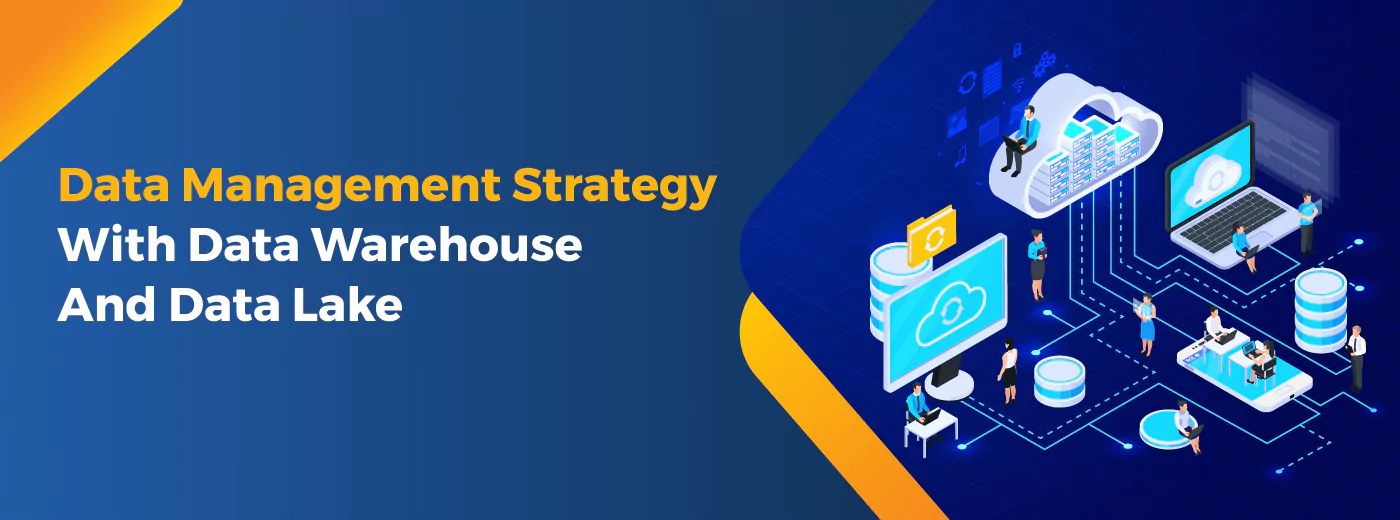Many organizations today are struggling with a common problem: their data warehouse is unable to affordably house all their data, while simultaneously supporting all their data analytics needs. An effective data management strategy is essential for staying competitive. Enterprises are tapping into a huge volume of structured, semi-structured and unstructured data today, and real-time analytics on streaming data is emerging as an important use case.
With these complex analytical needs, organizations are exploring new data management strategies. This is encouraging massive adoption of data lakes because it gives organizations an open door to store information in any format without any barrier.
The challenge is to come up with a data architecture that empowers users and enables wide-ranging use of analytics across the enterprise. Data lakes and Data warehouses are both core components in modern data architecture. To find value with their data management strategy, it must meet the business requirements of key use cases.
Answer The Following Questions To Understand Your Data Management Priorities.
Optimize insights with harmonious data warehouse and lake integration. Discover seamless co-existence for business growth.
Data Lakes Vs Data Warehouse! What Are The Differences?
Differences in technology
A data lake uses a flat architecture to store a huge amount of raw data in its native format until it is needed. There is no fixed limit on account size or file. The different data elements in data lakes are assigned unique identifiers and tagged with extended metadata tags. When business questions arise, the data lake is queried for relevant data, and the smaller set of data is then analyzed to answer the question. Until the data query, the schema is not defined. On the other hand, a hierarchical data warehouse stores data in files or folders with a defined schema. The information in a data warehouse is stored by the subject in order to assist management make quick decisions.
Differences In Use
Data Lakes are useful for data scientists because they allow experimentation on massive data sets. The users of data lakes are usually people who want to do a thorough analysis of data. But this doesn’t mean that they refrain from using data warehouses. The data warehouse acts as a primary source and they access data from data lakes when they require information outside the scope of the data warehouse. Because the data in a data lake lacks a meaningful structure, the data lake can be messy to the larger business audience.
In contrast, in a data warehouse, measures, and dimensions are conformed to curable components which are consistent, governed, and easier for an ever-scalable audience to consume. 80% of users of data warehouses are business users who need refined and systematic data. In a Data Warehouse, with query tools that use hierarchies, you can drill down into your data, and view different levels of granularity.
That is why a considerable amount of time is spent on cleaning and cataloging the data in a data warehouse. This must be done before business professionals for reporting and analysis using it.
Compare between No SQL and traditional offerings and understand the benefits of cross-cloud solutions
Differences In Accessibility And Adaptability
A data lake, because it stores all kinds of data in its raw form, is easily available for access to any user. Users are able to explore data in novel ways. More data means more questions can be answered. This makes it easily adaptable. On the other hand, a data warehouse takes a fairly long period of time to set up. During its development, a lot of time is dedicated to analyzing the sources of data and how it can be tuned to meet the needs of a particular business. Although most data warehouses are designed to be as adaptable as they can, they usually consume a lot of time and developer resources.
Data Lake is a cheaper way to store/manage data. It supports the rapid exploration and discovery processes that the data science team uses to uncover variables and metrics. With the data lake, the data science team can build predictive and prescriptive analytics that are necessary to support the organization’s different business use cases and key business initiatives.
For example, in the healthcare industry, the data warehouse approach has failed to drive high-value analytics use cases. A large volume of data- structured, semi-structured, and unstructured is collected in patient records, clinical data, etc. and the insights are needed in real-time. Data lakes take healthcare analytics to the next level and support high-end and complex analytics use cases with a faster turn-around time thus providing higher value and greater ROI for companies.
| Data Lake | Data Warehouse | |
| Type of data | Raw Data | Structure Data |
| Schema | Non Defined | Defined |
| Purpose of use | Non-Defined-Flexible | Governed |
| Architecture | Easier- less time | Complex- time taking |
| Users | Data Scientists / Developers | Business Users/End-Users |
Final Verdict
When data lakes first entered the market, many organizations simply dumped data into the lake. This transformed them into swamps that were nearly impossible to leverage, navigate, or trust. While the stored data is native there still needs to be governance and better internal organization with modern ingestion technologies that support all forms of data and metadata integration.
The data lake is a game-changer. It not only saves IT a whole bunch of money, but it also supports high-end analytics use cases. This promises businesses a significant return on value. Data warehouse, on the other hand, allows for more strategic use of data. Organizations typically look at data lakes as additions to their existing data warehouse.
Data lakes will continue to evolve and play an ever-increasingly important role in enterprise data strategy. Enterprises must have an effective data management architecture in place that includes a data lake. This must be in conjunction with one or more data warehouses that are suited to functional and departmental needs. So, the next time you think of a data warehouse vs a data lake think about the final use and what are your objectives for having the data management architecture. We understand if you are still contemplating what your right choice would be, so just contact us and we will help you in deciding what would be effective for your needs.
Polestar Solutions is ready to advise you on how to leverage big data potential with a tailor-made solution.



